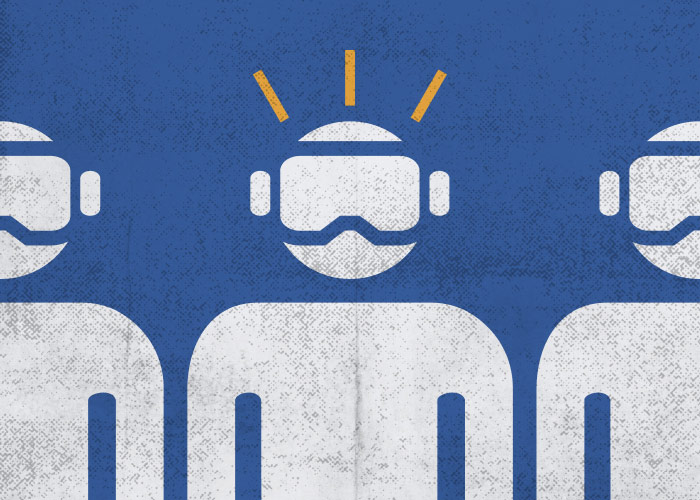What Is the Metaverse?

Despite the excitement around Metaverses, most people don’t understand what they are and what technologies underlie them. Let’s try to find out.
Metaverse: The Concept

In its essence, the concept of the Metaverse refers to a universe within a universe. Therefore, the Metaverse is a virtual space combining all the disconnected parts of the virtual world into a single whole. However, the existing or currently developing digital worlds are far from unity and serve only as separate parts of the future virtual space of the Metaverse, which remains hypothetical for the time being.
The concept of the ideal Metaverse was described in 2020 by Matthew Ball from Amazon Studios. His theory states that the basic principles of the Metaverse are:
- Persistence. Just like real life, the Metaverse never pauses, reboots, or ends.
- A single flow of time. The Metaverse is a living experience that exists consistently for everyone and in real time.
- Accessibility. The Metaverse space has no restrictions on access, anyone can become a part of it.
- Interoperability. The possibility for data exchange between participants from different parts of the virtual world is the basis for building the global Metaverse.
- A new kind of economic relations. Virtual world participants should be able to create, own, sell, buy, or exchange various digital objects and be rewarded for any online activity they participate in.
- User influence. Users are supposed to be the main providers of content and experiences in the Metaverse.
The term “Metaverse” first appeared in Neal Stephenson’s sci-fi novel Snow Crash. The author interpreted it as a virtual world where people, with the help of avatars, could sell and buy digital real estate. This idea was then actively developed, and the digital universe appeared in many movies that eventually became cult films. However, the actual realization of the Metaverse is still an idea. Lots of large corporations are engaged in developments, but there’s no single full-fledged virtual reality at the moment.
So, the Metaverse is essentially a way for people to interact with each other. During the pandemic, alternative ways of communication became relevant, so the idea of bringing all sorts of collaborative activities into the digital world has been particularly relevant. Although just a few years ago, the concept of the Metaverse was associated only with online games, in the modern world, it’s primarily a place for education, work, communication, and many other everyday activities.
Metaverse: Technologies

Processing a huge amount of data, which provides users with live interaction with the virtual world, requires technological innovations. That’s why every Metaverse project is based on the latest digital technologies, among them are:
- 5G and 6G communication standards;
- cloud computing;
- artificial intelligence;
- high-performance and specialized server equipment;
- virtual reality headsets.
By Mark Zuckerberg’s definition, the Metaverse is the “Internet where you’re in the experience, not just looking at it.” However, it’s still impossible to be physically present there, so being “in the experience” is made possible by:
- VR glasses;
- devices with haptic feedback (VR gloves);
- mobile and computer devices with high computing power.
It should be noted that the development of various technologies for interaction with virtual reality has accelerated significantly over the past few years. After all, the imitation of realistic tactile sensations will allow the concept of a complete virtual world to be realized. Hence, scientists and engineers are now actively working on creating various elements of user equipment necessary for the implementation of the Metaverse.
Technological standards, common for all its parts, play an important role in the Metaverse’s development. So, a single standard should have the following tools:
- 3D engines;
- design tools;
- programming languages;
- data transfer protocols;
- graphic elements.
The Metaverse, like the real world, can’t exist without social rules and a legal framework. This is where some difficulties arise. Creating a social and legal environment in the virtual world is possible, but enforcing it on the part of users is a difficult task.
In order to ensure that the virtual world doesn’t become a place for all that is considered immoral and illegal in reality, security features cannot be neglected. Even though technology makes it possible to generate absolutely any image and sometimes another personality in the virtual space, the identification of a real person in the network should remain the developers’ priority.
There are no laws for Metaverses yet, however, some governments are already emphasizing security in the virtual world. For example, UAE Minister of AI Omar Sultan Al Olama said that murders in Metaverses would be outlawed. Moreover, South Korea’s Ministry of Science and ICT (MSIT) has expressed concern that traditional video game laws in the Metaverse won’t make sense and, therefore, has begun developing recommendations for the sector’s future regulation.
Metaverse: Criticism

While the idea of creating virtual worlds seems appealing, it has quite a few opponents. They focus on several problems that the Metaverse has the potential to create.
The main reasons for criticizing the Metaverse are:
- Addiction. Some mass communication specialists and psychologists emphasize the fact that Metaverses are addictive. In particular, it concerns children and adults whose social contacts in real life are limited for one reason or another. According to scientists, socialization is an integral part of becoming a wholesome person, and it’s impossible to achieve a necessary level without live communication.
- Shifting priorities. Some critics believe that creating the Metaverse is just another way for big corporations to find a new source of profit. For instance, Video Games Editor Keza MacDonald has called Metaverses a “late-capitalist technocratic nightmare,” and she considers their main purpose to be “an escape from the inequalities and injustices of the real [world].” Her point of view echoes that of some other critics, claiming that Metaverse technology won’t help society solve real problems but only make them worse.
- Cyber dictatorship. The most ardent opponents of the Metaverse argue that governments and large corporations will use technology to control people. They’re convinced that the idea of decentralization, which lies at the heart of the Metaverse, has no future and is only an illusion of freedom.
Despite the criticism, virtual reality technologies continue developing and attracting more and more people willing to master the digital space. The market for Metaverse projects in the U.S. alone reached $48 billion in 2022 and could grow globally to $678 billion by 2030, according to a study by Statista.
The next part of this article will focus on the areas of modern life where virtual reality technology is already used and how the Metaverse will evolve in the near future.











